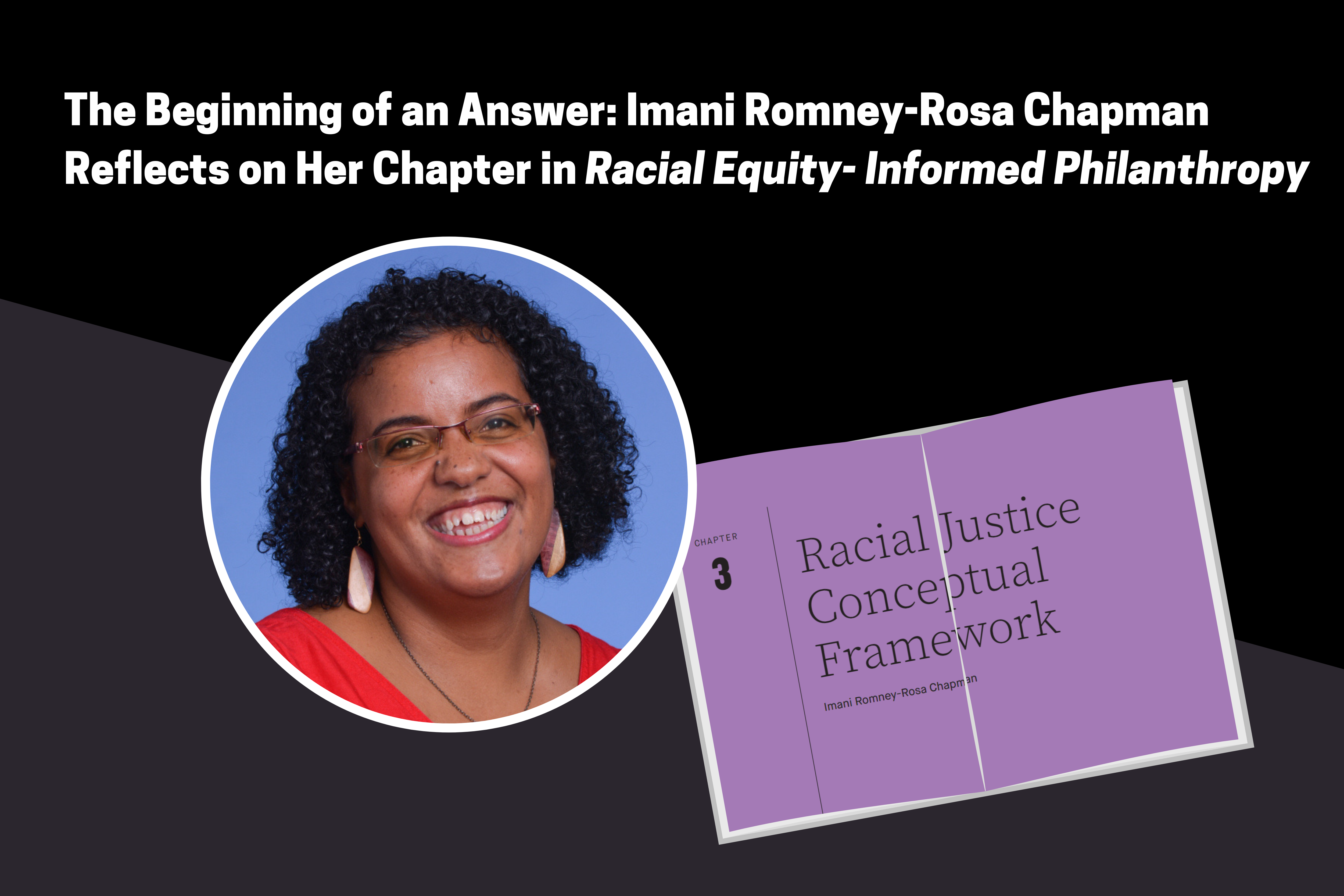
Much of what we’re taught to believe about race is a myth. In her chapter in Racial Equity-Informed Philanthropy: A Funder Resource from a Jewish Perspective, Imani Romney-Rosa Chapman uses historical context and psycho-social analysis to break down some of the concepts at the center of the myth.
“Why do we categorize by race? Where did the idea of race come from? And how are identity categories connected to systems of inequality?” her chapter asks. Chapman explains that although human variation exists and our brains like to categorize, the way we define and delineate race is a social construct. Her chapter unpacks bias, power, privilege, decolonization, and structural racism, providing a framework to ground readers of Racial Equity-Informed Philanthropy in a common knowledge base.
“The way structural racism informs bias is often about proximity,” Chapman explained in a follow-up interview about her chapter. “Because of the structures, like neighborhoods and housing, which are defined by government or banking, we don’t get to be near people whose presence might challenge what we think we know about them.”
Understanding how structural forces maintain racial inequalities is essential for becoming aware of the current social role—and future potential—of philanthropy. “When I started working on my chapter, Ilana Kaufman suggested reading Decolonizing Wealth by Edgar Villanueva. The idea of ‘money as medicine,’ which he focuses on in his book, was so profound to me, the same as when I first heard ‘power isn’t bad, abuse of power is bad.’ It allowed me to restructure how I approached the concept.”
Chapman said she believes in tackling structural inequities at the root. She shared a story that is often told in social justice and education circles that she first heard at the People’s Institute for Survival:
“There’s a baby coming down the river. So first, one person takes the baby out of the river. But the next day another baby comes down the river. So, they start to organize their community to rescue the babies and feed the babies and get them care and they build essentially a nonprofit network to take care of the babies in the river. But at some point, someone says ‘why are the babies in the river? Let’s go up the river and find out.’”
She believes that in order to operate through a racial equity lens, philanthropists must go up the river. This will often mean decentering one’s power and creating space for communities in need to determine their own solutions. “Whoever are the people closest to the problem are also closest to the solution. Mostly folks don’t need other people’s solutions. They have solutions. What they need is power. What they need is capital to enact the dreams and visions that they have.”
Chapman also believes that philanthropists can transform power dynamics by gifting funds directly to “people who are suffering the impact of oppression” and those who are working on the ground to heal injustice. Often, people engaging in justice work have limited resources to make transformations, and much of the nonprofit ecosystem operates through assumptions of scarcity. “It’s not that there is not enough. There is enough. There is enough!” she asserted.
In order to create structural change, individuals and communities with wealth must decenter their power and reconceptualize their wealth. “I’ve seen a lot of folks choose to use money in ways that decenter themselves. It’s a really powerful example to say ‘I have enough. I don’t need all of this. What can I meaningfully do?’”
In the Jewish community, Chapman believes directing funds towards Jews of Color is one crucial way to redistribute power and wealth more equitably. “I have only just begun to meet the one million Jews of Color in this country. The more Jews of Color I meet, the clearer it is how few I know… And I see how remarkable we are. We’re remarkable. And some of us would like to be able to find each other more easily.”
Creating spaces and places for Jews of Color to connect with one another is one of the essential goals of JoCI’s grantmaking. Creating more of these spaces is a responsibility Chapman would like to see predominantly white Jewish institutions hold. “There are a lot of forces that make connecting with other Jews of Color difficult. Not impossible, but difficult…increasingly, we are creating spaces for ourselves which I think is so amazing. But it’s only amazing if it’s by choice, not if it’s in the same way we have a lot of Jewish legacy organizations because we couldn’t go to the other places.”
Chapman hopes that Jewish communities will develop an openness to the visions and leadership of Jews of Color. “I’m one person. I’m one in one million. As someone who is often asked to speak on behalf of our community, I hope we leave the book open—leave the pen uncapped on the page—because somebody else is going to have something else to write.”
This openness must begin with re-envisioning the role philanthropy plays in our community, asking how to make tangible change through the lens of racial equity. “For there to be an answer to that question feels like a real gift. And the guide is not the only answer, but it’s the beginning of an answer—a communal answer—that can rally people together so folks who are dedicated to this work can come together to create change.”
Access the guide here to read Imani Romney-Rosa Chapman’s chapter, “Racial Justice Conceptual Framework.”


